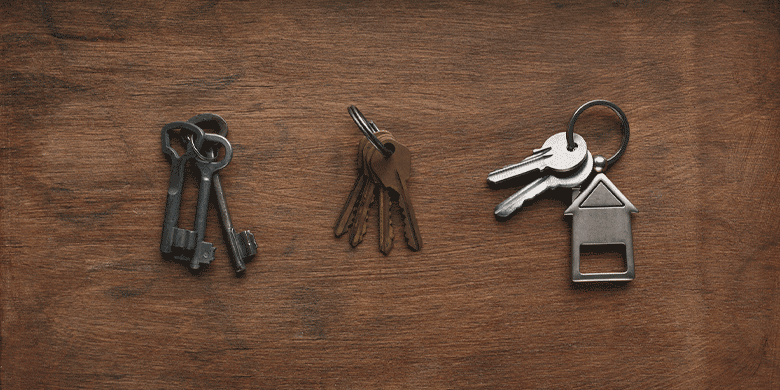
21 June, 2023
Unlocking the Past: A Journey Through the History of Keyrings
Keyrings are ubiquitous objects that we use every day to keep our keys organised and easily accessible. However, the history of keyrings is far more interesting than most people realise. In this article, we will take you on a journey through the history of keyrings, from ancient times to modern-day custom keyrings.
The use of keyrings can be traced back to the ancient times when keys were first invented. The earliest keyrings were made of organic materials such as bone or wood and were used to hold keys securely. The ancient Egyptians are known to have used keyrings as early as 4000 BC. These keyrings were often designed to be worn around the wrist and were made of materials like leather or animal hide.
During the middle ages, keyrings were still made of organic materials like bone, but they also began to be made of metal. These keyrings were often highly ornate, featuring intricate designs or were engraved with religious or symbolic imagery.
In the 13th century, locksmiths began to create more complex lock mechanisms that required larger keys, and as a result, keyrings became larger as well. Keyrings made of iron or brass were used to hold multiple keys, and they often featured loops or hooks to make it easier to add or remove keys.
In the 19th century, keyrings became increasingly popular, as the advent of the Industrial Revolution led to mass production and accessibility. Keyrings were used for practical purposes such as keeping keys organized and preventing them from being lost. They were also used as a symbol of status and wealth, as keyrings made of precious metals and adorned with semi-precious stones were common. Keyrings were often personalized, with initials or monograms engraved on them, making them a popular gift for special occasions like weddings and graduations.
Keyrings also had a military application in the 19th century, with officers using them to keep important keys for armouries, barracks, and forts safe and secure. The keyring became an essential item in the military, with keyrings specifically designed for soldiers being used to hold identification tags, dog tags, and other important items. Overall, the 19th century saw the keyring evolve from a simple practical item to a status symbol and military tool.
In the early 20th century, keyrings became more than just a practical tool to keep keys together. They started to take on a more decorative role, with designs becoming more intricate and materials such as silver and gold being used to create them. Keyrings also became popular as souvenirs or gifts, with destinations or events being commemorated on them.
During World War I, keyrings took on a new purpose as soldiers used them to carry photos of their loved ones or good luck charms with them into battle. Keyrings became a symbol of hope and connection to home during a time of war and separation.
In the 1920s and 1930s, keyrings continued to evolve with the introduction of new materials such as plastic and Bakelite. These new materials allowed for more affordable and mass-produced keyrings, making them accessible to a wider range of people. Keyrings became a popular promotional item for companies, with their logos or products being featured on them as a way to advertise their brand.
During the 1960s and 1970s, the use of promotional keyrings became increasingly popular as a marketing tool. Companies would often give out custom keyrings with their logo or message to promote their brand and create customer loyalty. These keyrings were often given out at events or as part of a larger promotional campaign.
In the 1960s, plastic keyrings became more common, which allowed for more affordable mass production. This also opened up new design possibilities, as plastic keyrings could be molded into different shapes and sizes. As a result, companies could create custom keyrings that were more creative and unique than ever before.
The 1970s saw a rise in environmental awareness, and some companies began to use keyrings made from recycled materials as part of their promotional efforts. This not only helped promote the company's brand, but it also showed their commitment to environmental sustainability.
Overall, the 1960s and 1970s were a time of significant growth for promotional keyrings, and their popularity as a marketing tool only continued to rise in the decades that followed.
Today, custom keyrings are more popular than ever. With advances in technology, it is now possible to create keyrings in a wide variety of materials, including plastic, metal, and leather. Custom keyrings can be personalised with photos, logos, and messages, making them the perfect promotional item or gift.
Custom keyrings are also used as a way to support causes or organisations. For example, many charities create keyrings that are sold to raise money for their cause. Similarly, sports teams and fan clubs often create custom keyrings to show support for their favorite team or player.
In conclusion, the history of keyrings is a fascinating one that spans thousands of years. From simple metal rings to custom keyrings made of a variety of materials, keyrings have come a long way. Today, keyrings are not just functional objects but are also a way to express oneself and show support for causes or organisations. Whether you prefer a classic design or a custom-made keyring, there is a keyring out there for everyone.
The Keyrings Only Team

